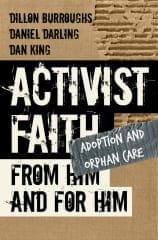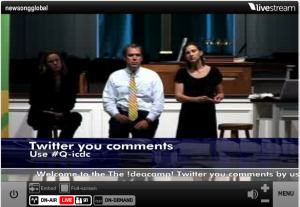
Who: Dave Ferguson (NewThing Network)
In what ways is your church engaging in the community? What is (or is not) working? Why?
 Some responses…
Some responses…
- One church responded that they really don’t connect in their own community. It is easy to see the great needs in places around the world (like in India), but we seem to expect others in the church to make things happen in our own backyards.
- There is a big difference between events and building real relationships. When opening up events to people in the community, sometimes people in the church may feel uncomfortable because we expect our programs to work without the need to build actual relationships.
- One church opened a ‘free grocery store’ and used it to open the door to building strong relationships with people in need.
- Requiring small groups to have a missional component and empowering the small group leaders to take the lead on these initiatives has opened up great opportunity. It has also presented some challenges as church leadership has to ‘let go’ a little as autonomy increases.
How to respond to needs in the community. There are three levels of response…
- Charitable (compassionate) response… This is about meeting the basic needs, primarily through a handout. It gets immediate results, but typically has short-term results with little long-term impact. “If you are hungry, I’ll give you a fish.”
- Empowerment response… These are things like tutoring, job skills training, Christmas gift mart, etc. Much less common. It is a hand-up, not a hand-out. It requires more in the way of relationships, and has a little more long lasting impact. “If you are hungry, I’ll teach you how to fish.”
- Development response… These are programs that do things like creating home ownership for people that don’t normally have the means to buy a home. These take much longer to develop. The impact affects many other areas like creating stability in the community. They are the most uncommon, but it is important for churches to move more in this direction. It involves real advocacy and economic development. Focus is on systemic changes in the community. “If you are hungry, I’ll help you build a fishing pond.”
Where are your church outreach programs, and how can you move them closer to level three in this list of types of responses?
More from ICDC: live blogging @theideacamp conference




0 Comments